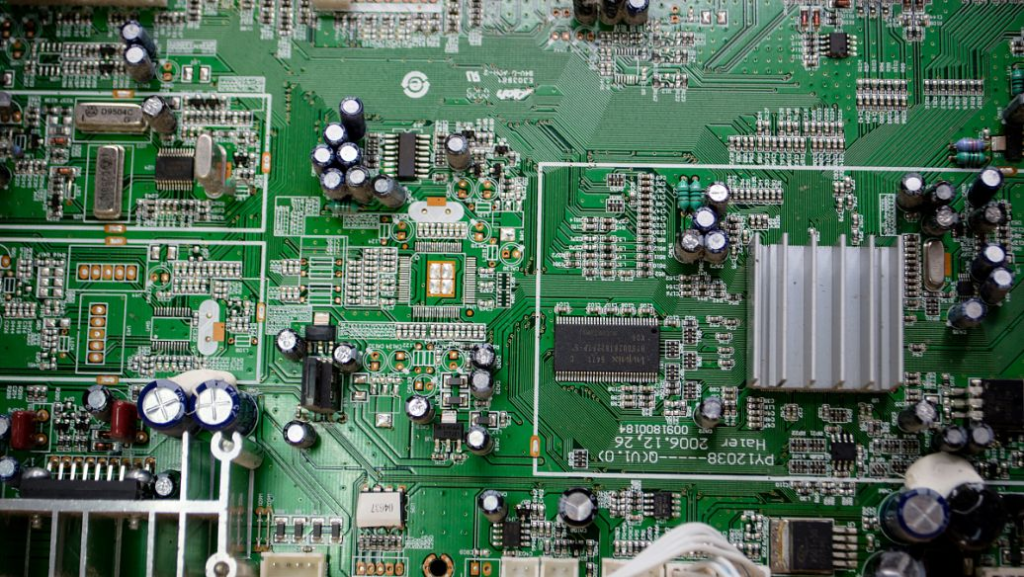
Do you know why Lithium-ion batteries needs battery management system (BMS)? For a full explanation of how the BMS works as follows.
Lithium-ion batteries (rechargeable) needs BMS because of their own characteristics.The material of lithium battery itself determines that it can not be overcharged, over discharged, over current, short circuit and ultra-high temperature charge and discharge, so the lithium battery component always follow with BMS and a Current protector.
The protection function of lithium battery is usually completed by the cooperation of protection circuit board (PCB) and current device such as PTC, BMS is composed of electronic circuits, which monitor the voltage of the cell and the current of the charge and discharge loop accurately in the environment of -40℃ to +85℃ every moment, and control the current loop on and off timely, positive temperature coefficient (PTC) protects batteries from severe damage at a high temperature environment.
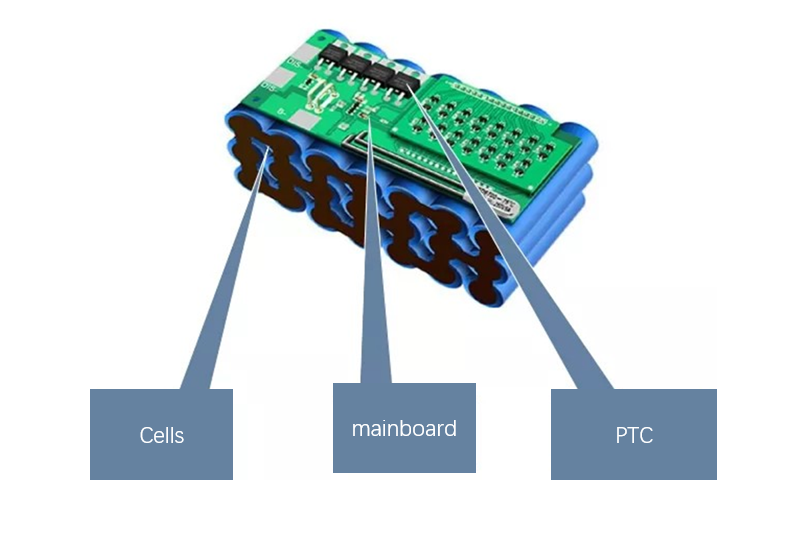
BMS includes control IC MOS switch and auxiliary devices such as NTC ID memory. Under normal conditions, the control IC controls the MOS switch to switch on, which make the cell communicate with the external circuit, when the voltage of the cell or the circuit current exceeds the specified value, it immediately controls the MOS switch off, so as to protect the safety of the cell.
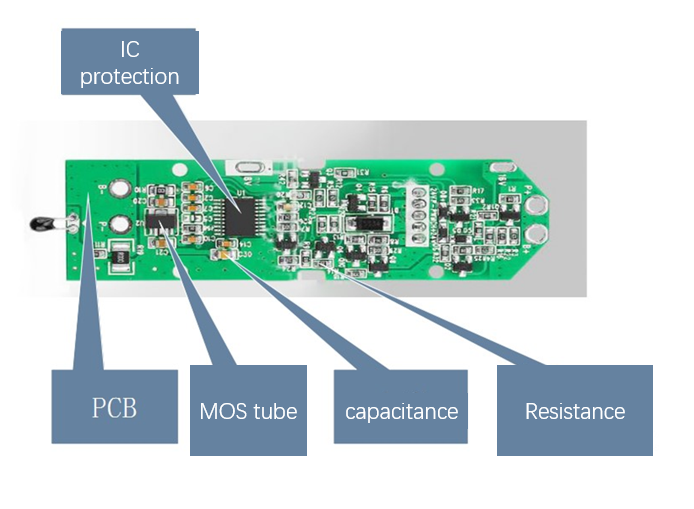
Negative temperature coefficient (NTC). When the ambient temperature rises, the resistance value decreases, the using electrical equipment or charging equipment to respond to internal interruptions and stop charging and discharging
Identification (ID)is divided into two kinds: One is memory, which is a normally single-wire interface memory, storage battery types, product date and so on. The other one is Identification of resistance. Both can act as traceability of the product and limitations of application.
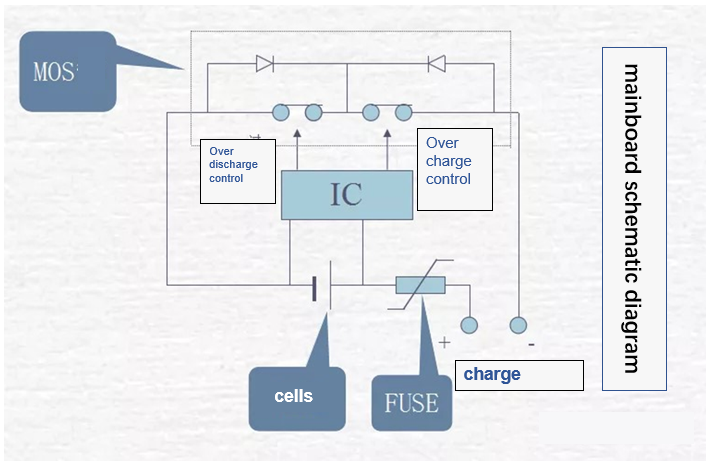
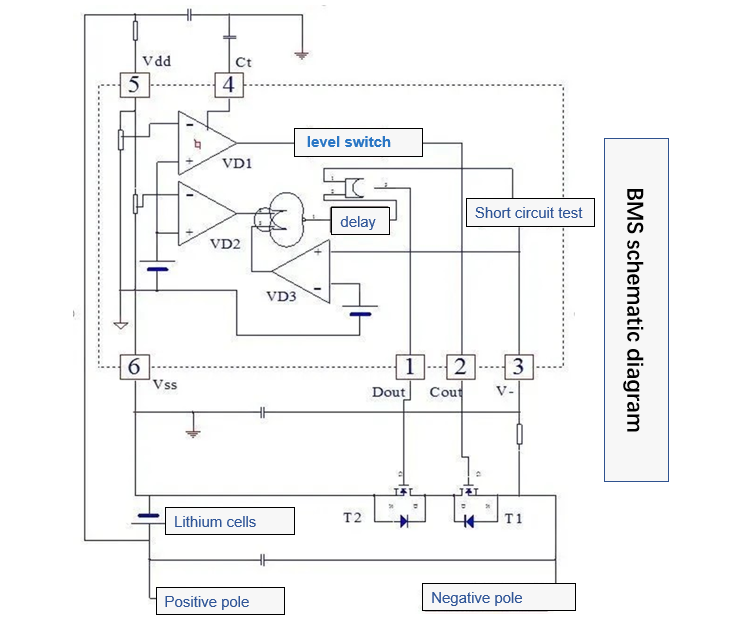
Overcharge Protection

During the battery is charged, if the voltage exceeds the set value of Vc (4.25-4.35V), VD1 flips COUT to low level, T1 cut-off, stop charging. When the battery voltage falls back to VCR(3.8-4.1V), COUT becomes high level, T1 charging continues, VCR is less than a constant value of VC, which for preventing frequent current jumps.
Over discharge protection
When the battery voltage is reduced to the set value VD(2.3-2.5V) due to discharge, VD2 flip, after a short time delay of IC internal fixation, the DOUT becomes low level,T2 stops, and the discharge stops.
Over-current and short-circuit protection
When the discharge current of the circuit exceeds the set value or the output is short-circuited, the overcurrent short-circuit detection circuit will act to turn off the MOS tube and cut off the current.
Same as the single cell, during multi – cell protection circuit, BMS also be able to provide over charge, over discharge, over current and short circuit protection for the cell.
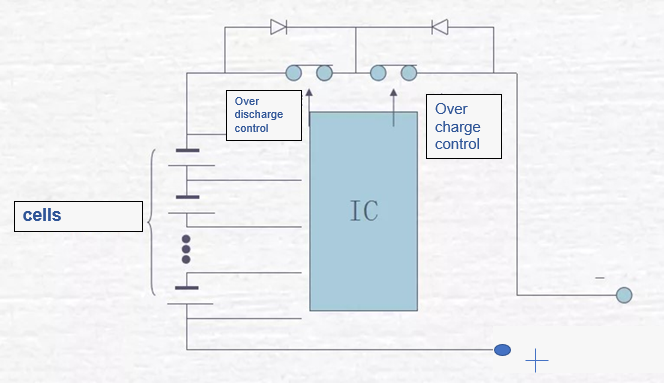
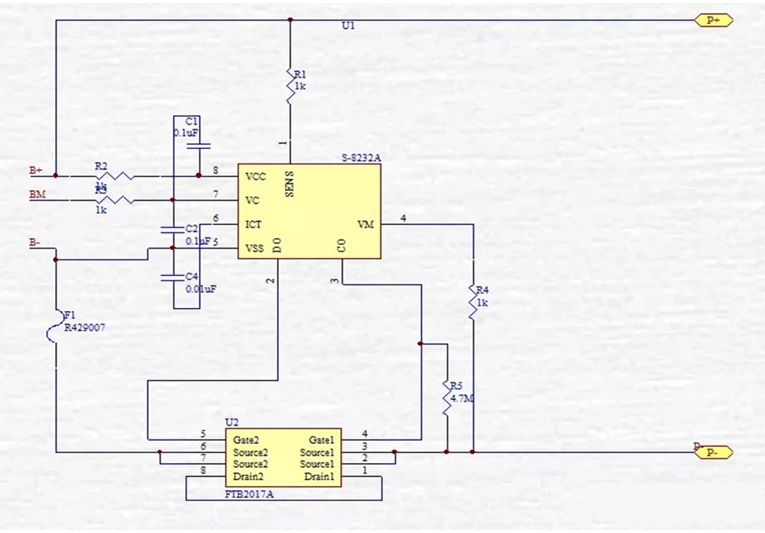
Schematic diagram of power consumption test

Schematic diagram of short circuit test

Schematic diagram of over discharge test


